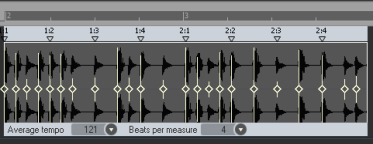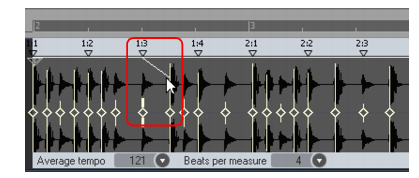Each audio clip has an internal tempo map, which makes it possible to synchronize the audio clip with the project’s global tempo map.SONAR automatically creates a tempo map for each audio clip. In some cases, SONAR can detect the wrong tempo. For example, SONAR might detect a tempo of 120 BPM when the actual tempo is 240 BPM, or a beat may be mapped to the wrong transient. You can easily remap the tempo map, if necessary.You should make sure a clip’s internal tempo map is correct before using any of the tempo-related commands in the AudioSnap palette.



Tip - Searching Documentation
Tip: To search for a specific topic, type your search query in the Search Cakewalk.com field at the top right of this page.
When the search results appear, click which product's documentation you would like to search to filter the search results further.
Note - Using Offline Help
Note: If you prefer to always use offline Help, go to Edit > Preferences > File > Advanced in your Cakewalk software and select Always Use Offline Help.
If you are not connected to the internet, your Cakewalk software will default to showing offline help until an internet connection becomes available.





